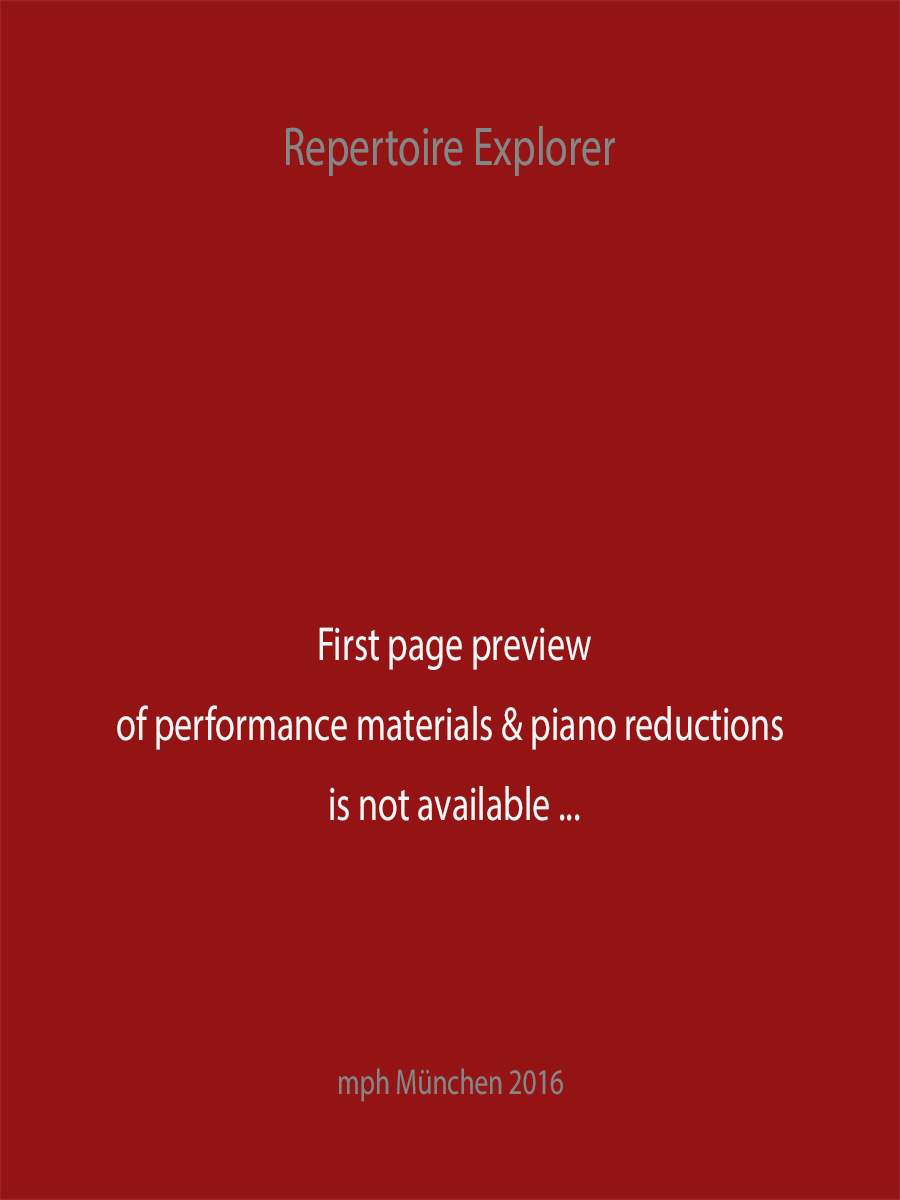Violin Concerto No. 2 in D minor Op. 22 (Piano Reduction/Solo)
Wieniawski, Henri
16,00 €
Wieniawski, Henri
Violin Concerto No. 2 in D minor Op. 22 (Piano Reduction/Solo)
Preface to full score
Henryk Wieniawski (b. Lublin, 10 July 1835 – d. Moscow, 31 March 1880)
The Polish violinist Henryk Wieniawski, perhaps the greatest violin virtuoso of the late nineteenth century, left behind relatively few compositions. Among these, however, besides the usual round of brilliant fantaisies, rêveries, caprices, and souvenirs typical of the nineteenth-century travelling virtuoso (including a Souvenir de San Francisco published in that city in 1874), are two full-scale romantic concertos, both of which have remained in the repertoire. Of these the second, published here in miniature score, remains one of the best examples of its genre and has attracted the greatest violinists of several generations. A glance at the discography of this difficult work gives some idea of its enduring magnetism: Misha Elman, Váša Přihoda, Jascha Heifetz, Erica Morini, Isaac Stern, Itzhak Perlman, Pinchas Zukerman, Igor Oistrakh, Ida Haendel, and, from a more recent generation, Marat Bisengaliev and Joshua Bell have all made recordings of this concerto with conductors of the stature of Barbirolli, Ormandy, Konwitschny, Ozawa, and Ashkenazy.
Wieniawski may have begun composing his Second Violin Concerto as early as 1856, but the first firm date in its genesis is the première performance, given in St. Petersburg on 27 November 1862 with the composer himself in the solo part and his good friend and duo partner Anton Rubinstein conducting the orchestra. The work remained in Wieniawski’s private repertoire for years before it was finally published by Schott in Mainz in 1879. This first edition, issued both in full score and in piano reduction, was given the opus number 22 and dedicated to the composer’s good friend and rival, Pablo de Sarasate.
Wieniawski’s Second Concerto is laid out in an unusual form even by the standards of its time. The agitated first movement (Allegro moderato) has a spacious double exposition in which the orchestra presents the thematic material at great leisure (and duplication) before handing it over to the violin for virtuoso peroration. The lyrical second theme, first stated in a striking horn solo early in the piece, is left undeveloped in the first movement, but resurfaces in the finale. Indeed, the development section is given over entirely to the orchestra and leads directly into the slow movement (Andante non troppo), skipping the recapitulation altogether. This slow movement, entitled Romance, is written in the style of an Italian opera aria with an obsessive Verdiesque accompaniment figure. It is allowed to reach a fervid and moving climax, after which a long violin cadenza takes us to the rondo-finale (Allegro con fuoco – Allegro moderato), a stirring movement in the “alla zingharese“ style, abounding in sharp contrasts and dizzying moto perpetuo passages. The violin writing covers all the difficulties known to the nineteenth-century virtuoso: glissandos, double stops, arpeggios, parallel sixths, octaves, and thirds, chromatic scales, and artificial harmonics, not to mention a wealth of bowing styles. The orchestration is surprisingly rich and well-judged for a composer known mainly as a virtuoso instrumentalist. Indeed, there is every reason to believe that as long as virtuoso violin music has practitioners and audiences, Wieniawski’s Second Concerto will remain in the repertoire.
Bradford Robinson, 2008
For performance material please contact the publishe Forberg/Jurgenson, Bonn.
| Score No. | 796b |
|---|---|
| Edition | Repertoire Explorer |
| Genre | Violin & Orchestra |
| Size | |
| Printing | Reprint |
